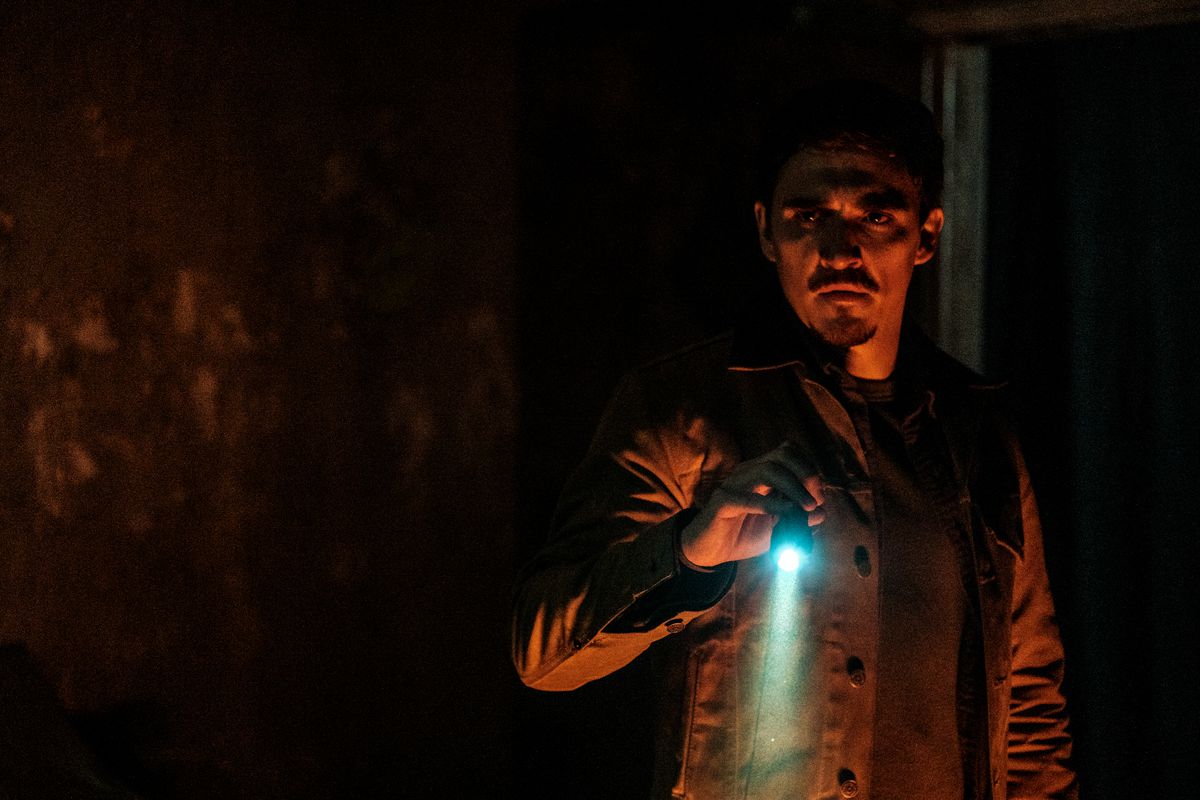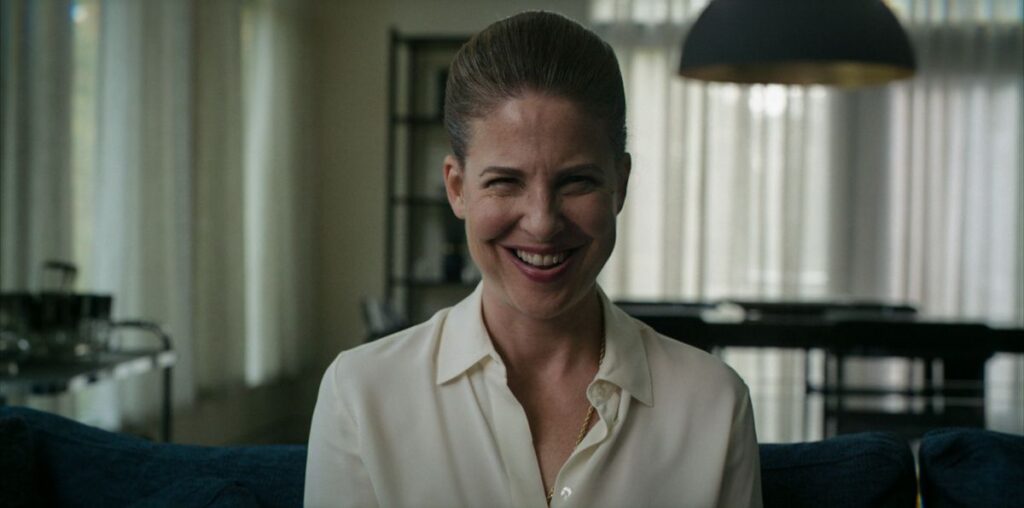Parker Finn’s debut horror film, Smile, has been a significant theatrical hit for Paramount, even though it was never intended to play in theaters at all. The movie — an eerie metaphor for mental illness — was originally planned as a straight-to-streaming project for Paramount Plus. But test audiences responded so strongly that Paramount opted for a wide release, and the impact the movie’s horrifying villain had on audiences was likely a strong part of that decision.
[Ed. note: This story contains a major spoiler for Smile.]
Photo: Paramount Pictures
Smile centers on a hospital therapist named Rose (Sosie Bacon) who becomes the latest victim of a pain-eating entity that can take on the form of anyone she knows, alive or dead. For most of the movie’s run, she never knows whether a given person in a room with her is the friend she expects them to be, or a monster wearing a familiar face.
But by the end of the movie, the creature literally rips off its mask, exposing something red, raw, and glistening, with a whole dangling series of toothy grins on its face, one below the other.
“I kept wanting to do something that felt like its reveal would be overwhelming and mind-breaking,” Finn told Polygon in an interview at Austin’s Fantastic Fest, shortly after the film’s world premiere. “I kept leaning into that — I kept explaining to everyone, ‘I want it to be gleefully evil.’ So it leans into the feeling of smiling, and this evil happiness.”
Finn says the image of the creature’s revealed face came to him “very early on, that exact frame,” and he drew a crude version of it to pass on to other creators, so they’d have some idea of what was in his head.
“I’m not a great artist. I’m very rudimentary,” he says. “But I handed that drawing off to a concept designer who was able to do something really special with it. And then we took that piece of art and eventually gave it to StudioADI, to Tom Woodruff Jr. and Alec Gillis and their team. They’re amazing artists in their own right, and they reinterpreted it with what they do best. The end result is this amazing practical effect that I’m so proud of.”
Like so many horror directors operating during the digital age of film, Finn felt it was particularly important to make his monster a physical artifact rather than a digital illustration.
“I grew up on practical effects,” he says. “It’s one of the reasons I wanted to become a filmmaker. I think that when something is practical, it just has more gravity to it. It has real weight and physics, and an actor can actually interact with it on set. It makes a big difference. Of course you can use VFX as a tool to help bring certain things to life, but the practical nature makes it real. And not only while you’re physically doing it in production, but I think for the audience as well.

Photo: Walter Thomson/Paramount Pictures
“Unless you have a giant Marvel budget, I think people can always sniff out CGI. But hopefully instead, when they get to that moment in Smile, they’ll be asking themselves, What in the hell am I even looking at here? How is this possible?”
The physical creature was a 9-foot-tall monstrosity that required a performer inside it and puppeteers to operate the gangly limbs, Finn says.
“I gotta tell you, when we set that up — that image I had drawn, that had been in my brain cooking for so long as a big logistical challenge, just, How are we gonna pull that off? — to finally be there and be shooting it was just absolutely surreal. The entire crew was gathered around to look at this 9-foot monster on set that is doing what it’s doing. It was just really special. It’s one of those pinch-me moments that’s like, We’re doing real movie magic here.”
Finn says working with the monster was his favorite part of making the film: “It’s something that will live with me forever.”
But the monster itself won’t live with him — he’s not sure where the puppet went after the film was finished. No matter how much he loved it, he wasn’t interested in trying to take it home. He says StudioADI probably has it in a warehouse somewhere — which is just as well, given that transporting it for shooting presented a lot of practical issues. “That thing had to fly from California out to New Jersey,” he says. “I like to think we got it a first-class ticket.”

